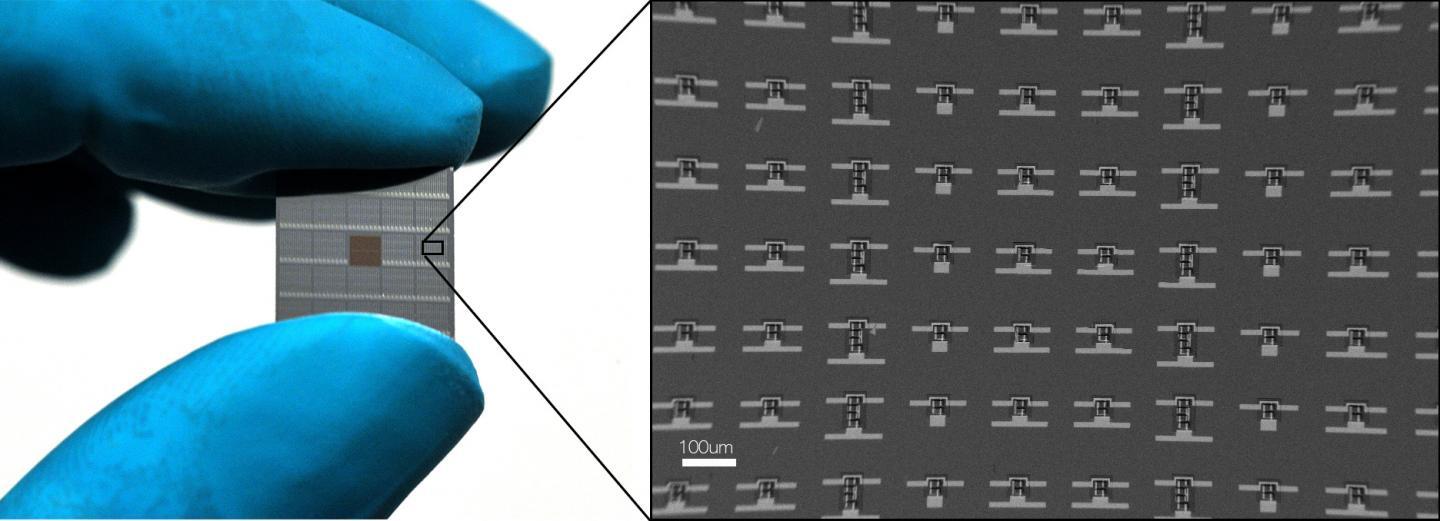Science
One of the robots goes for a stroll
Marc Mishkin
1/4
Up to a million of the robots can be made from one 4-inch wafer
Marc Mishkin
2/4
One of the robots goes for a stroll
Marc Mishkin
3/4
Up to a million of the robots can be made from one 4-inch wafer
Marc Mishkin
4/4
One of the robots goes for a stroll
Marc Mishkin
We've seen numerous nano-devices designed for tasks such as delivering medication within the body, and they move in a variety of ways. One of the latest is a tiny four-legged robot, that could actually walk to its target.
The technology was first developed by the University of Pennsylvania's Asst. Prof. Marc Miskin, when he was a postdoc at Cornell University. Joining him in the research were professors Itai Cohen and Paul McEuen, and researcher Alejandro Cortese.
Utilizing a proprietary multistep nanofabrication technique, batches of up to a million of the 70-micron-long robots can be produced in a matter of weeks, all of them coming from a single 4-inch (102-mm) silicon composite wafer.

Marc Mishkin
Each robot's body consists of an ultrathin glass rectangle topped with a layer of silicon – the electronic control components and either two or four solar cells are etched onto that layer. The legs, meanwhile, are made from a 100-atom-thick material that consists of one layer of platinum and one of titanium (graphene can also be used in place of the latter).
When a laser is shined onto the solar cells, the resulting electrical current is alternately applied back and forth between the front and rear legs. The application of that current causes the platinum to expand while the titanium remains rigid, thus bending each leg. When the current is switched off, though, the leg straightens back out. In this fashion, the robot is able to make its way forward.
The robots are small enough that they can actually be injected into the body via a hypodermic needle. They would currently be limited to travelling beneath a "fingernail-width" layer of tissue, however, as that's all that the external laser light could sufficiently penetrate. That said, Miskin is looking into other power sources, such as ultrasound and magnetic fields. Colleagues at U Pennsylvania and Cornell are also working on "smart" versions of the robots that incorporate sensors, clocks and self-controllers.
Miskin will be presenting his research at the American Physical Society March Meeting, in Boston. And if you can't make it to that meeting, you can still see a batch of the robots being released from their wafer, on YouTube.
Source: American Physical Society via EurekAlert

